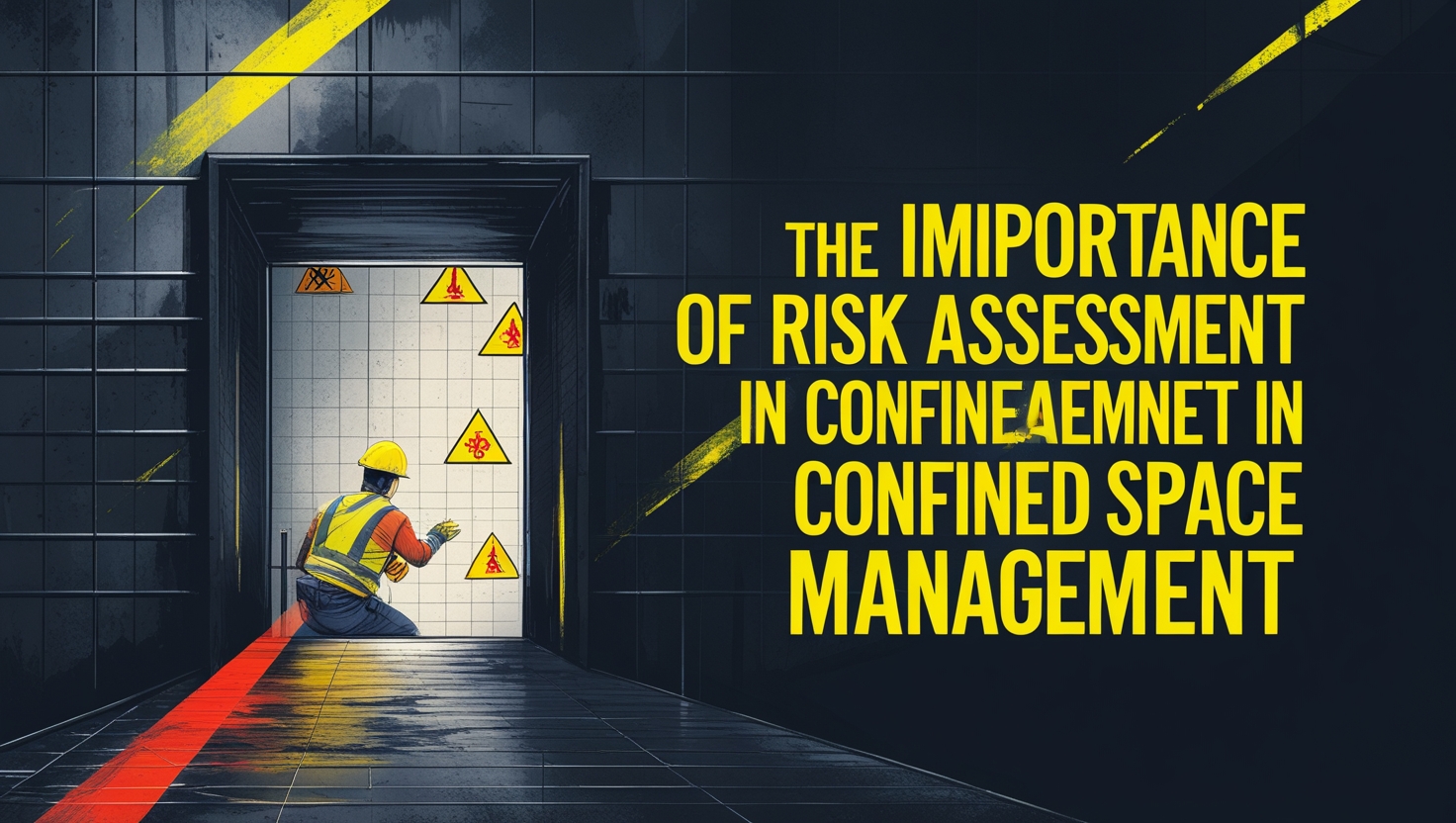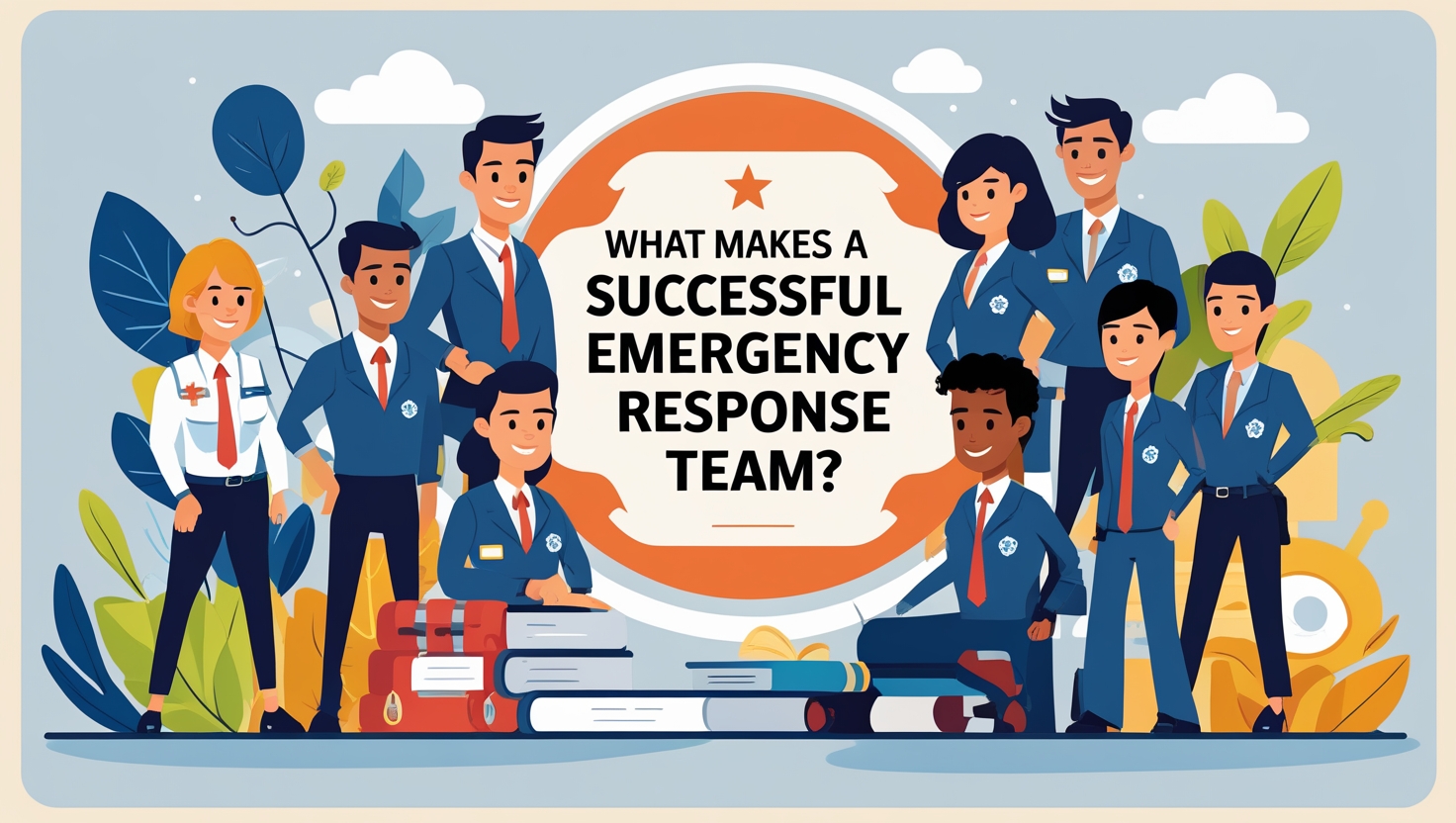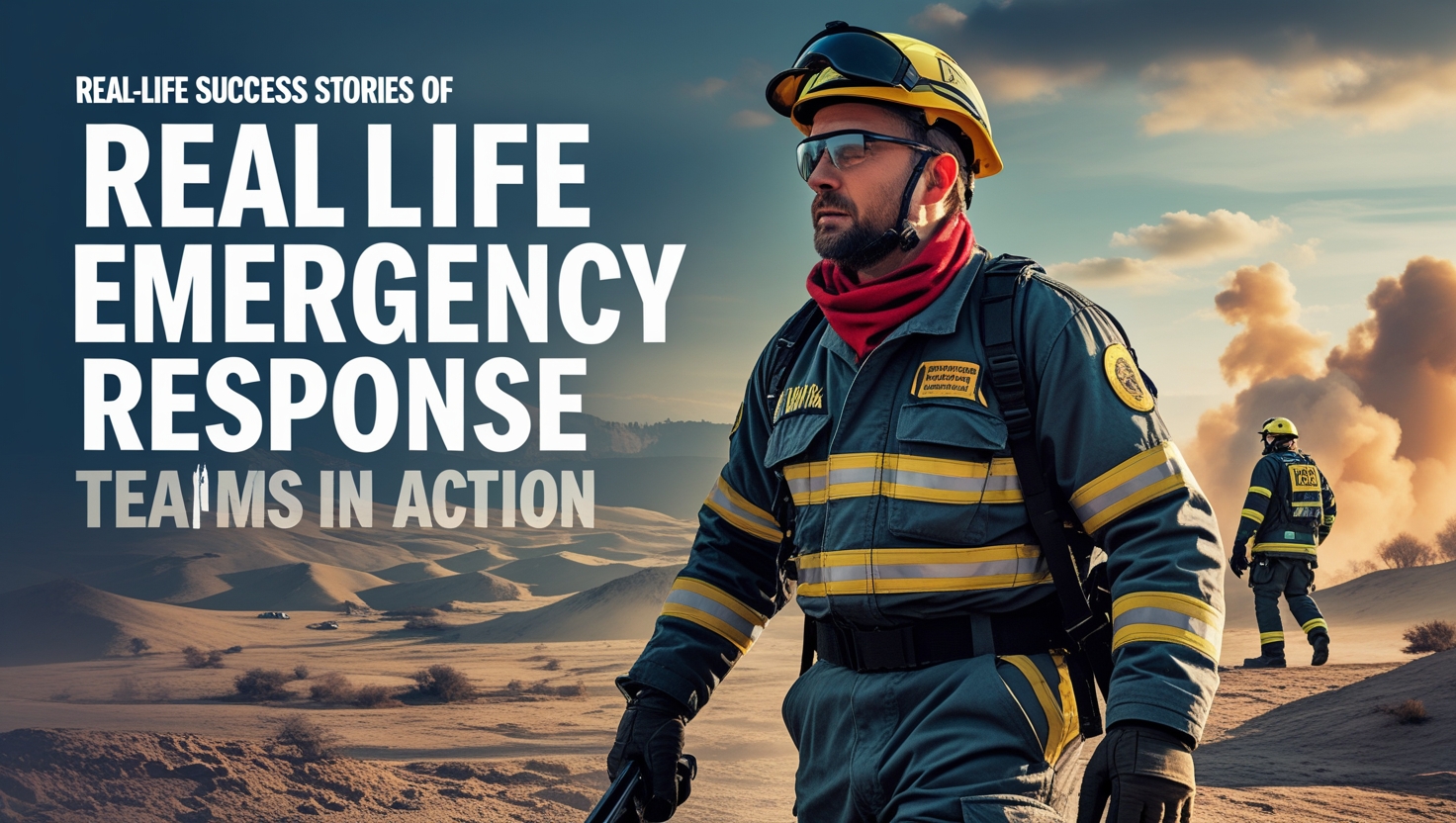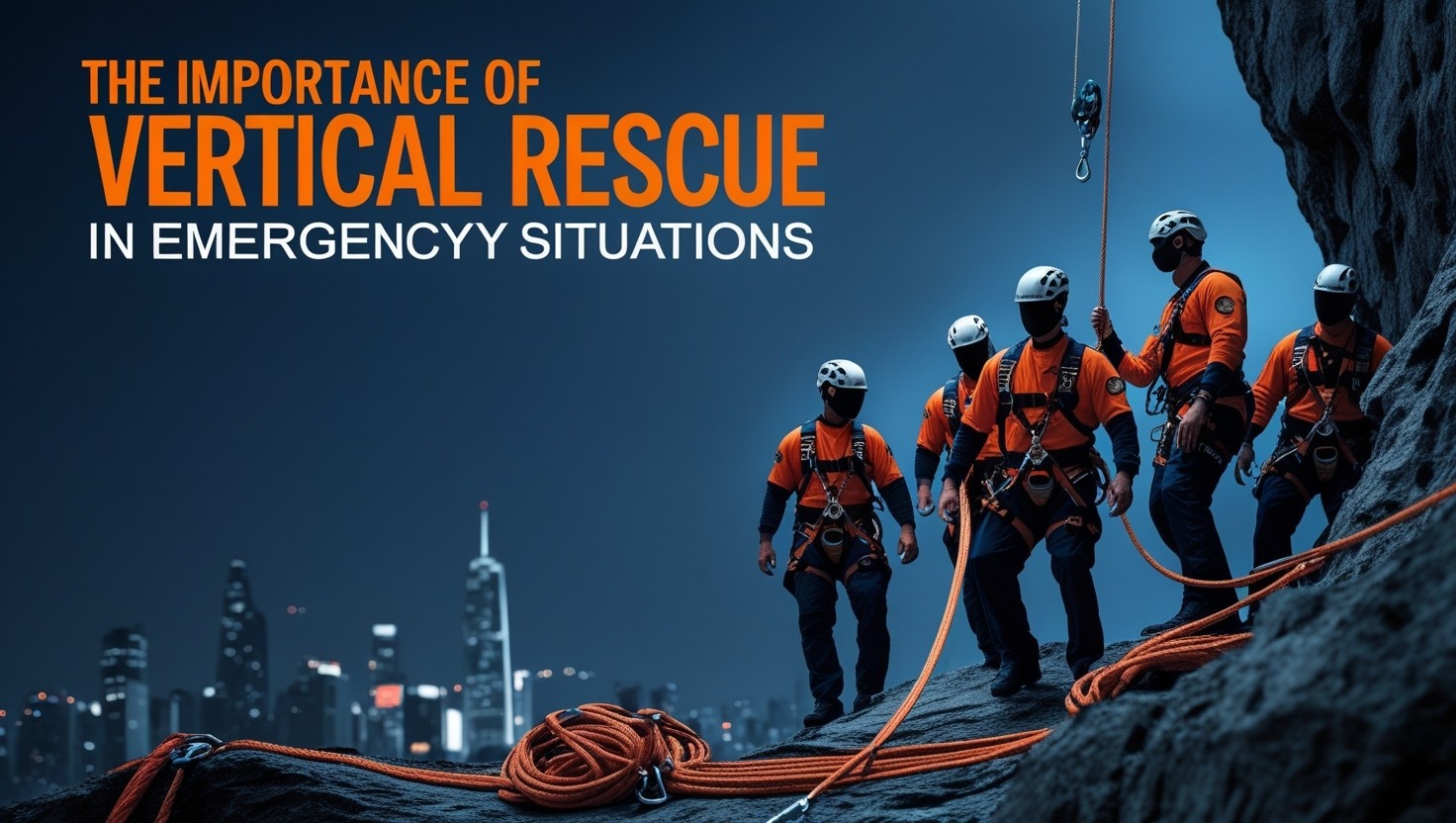The Importance of Risk Assessment in Confined Space Management

Strong 8k brings an ultra-HD IPTV experience to your living room and your pocket.
Confined spaces are some of the most hazardous environments encountered in industrial, construction, and maintenance operations. These spaces are not designed for continuous occupancy and often present unique risks that can quickly become life-threatening if not properly managed. Whether it’s a tank, vessel, silo, manhole, or pipeline, confined spaces demand a comprehensive approach to safety.
Among all the safety measures employed in confined space operations, risk assessment stands out as the most critical. A thorough risk assessment not only helps in identifying the potential hazards within a confined space but also serves as the foundation for implementing appropriate control measures. In this blog, we’ll delve into the importance of risk assessment in confined space management, its core components, and how it contributes to worker safety and compliance.
Understanding Confined Spaces
Before diving into risk assessments, it’s important to define what constitutes a confined space. According to safety regulations in many jurisdictions, a confined space has the following characteristics:
It is not designed for continuous human occupancy.
It has limited means of entry or exit.
It is large enough for a worker to enter and perform assigned tasks.
Confined spaces can also be classified as:
Permit-required confined spaces (PRCS): These contain or have the potential to contain hazardous conditions.
Non-permit confined spaces: These do not contain hazards capable of causing death or serious physical harm.
Even in non-permit spaces, unexpected dangers can arise, which is why risk assessment remains universally essential.
Why Risk Assessment is Crucial in Confined Space Management
1. Identifying Hazards
The foremost goal of a risk assessment is to identify potential hazards. Confined spaces can harbor numerous dangers such as:
Oxygen deficiency or enrichment
Toxic gas accumulation
Flammable or explosive atmospheres
Engulfment by liquids or loose materials
Mechanical and electrical hazards
Poor visibility and limited mobility
Early identification of these hazards allows safety teams to tailor their protective strategies and equipment accordingly.
2. Preventing Accidents and Fatalities
Confined space incidents are often catastrophic due to the environment’s unforgiving nature. A risk assessment ensures:
Entry is only attempted when it is absolutely safe.
Necessary precautions are taken to mitigate risks.
Emergency plans are in place in case something goes wrong.
In essence, risk assessments save lives.
3. Legal and Regulatory Compliance
Occupational health and safety authorities—like OSHA in the U.S. or Safe Work Australia—mandate comprehensive risk assessments before entering confined spaces. Non-compliance can lead to:
Heavy fines
Legal liabilities
Shutdown of operations
Reputational damage
A well-documented risk assessment ensures organizations meet all regulatory requirements and are prepared for audits and inspections.
4. Developing Effective Safety Protocols
Risk assessment is the first step toward creating effective confined space entry procedures. Based on the identified hazards, safety managers can determine:
Required personal protective equipment (PPE)
Gas detection and ventilation needs
Communication systems
Rescue and emergency procedures
Permit-to-work systems
Without risk assessment, these protocols may be incomplete or ineffective.
5. Enabling Proper Training and Awareness
Workers entering confined spaces need to be trained based on specific risks. A generic safety briefing won’t suffice. A detailed risk assessment allows for:
Tailored training sessions
Scenario-based simulations
Increased situational awareness among employees
The result is a workforce that’s both competent and confident in managing confined space risks.
Key Components of a Confined Space Risk Assessment
A comprehensive confined space risk assessment generally includes the following components:
1. Initial Site Evaluation
Identification of confined spaces
Classification into permit-required or non-permit
Recording of location, structure, and access points
2. Hazard Identification
Atmospheric testing (O₂ levels, toxic gases, flammables)
Structural integrity assessment
Mechanical and electrical hazards
Biological risks (e.g., mold, bacteria)
Environmental concerns (e.g., water ingress)
3. Risk Analysis and Evaluation
Likelihood and severity of each identified hazard
Possible consequences and exposure scenarios
Prioritization of risks using risk matrices
4. Control Measures Implementation
Engineering controls (ventilation, isolation of energy sources)
Administrative controls (safe work procedures, permits)
PPE requirements (respirators, harnesses, helmets)
5. Emergency and Rescue Planning
Identification of potential emergencies
Designated rescue team and equipment
Rescue plan tailored to the specific space
6. Documentation and Review
Detailed risk assessment report
Confined space entry permit
Regular review and update of assessment
Common Hazards and Risk Control Strategies
Let’s look at common confined space hazards and how risk assessments help in managing them:
Hazard
Risk Assessment Role
Control Measures
Oxygen deficiency
Identifies need for atmospheric testing
Ventilation, use of SCBA
Toxic gases (e.g., H₂S, CO)
Detection through gas monitors
Continuous air monitoring, evacuation plans
Engulfment
Evaluates material properties and entry path
Barriers, training, communication
Heat stress
Considers temperature, humidity, and PPE load
Work-rest cycles, hydration
Explosive atmosphere
Classifies space based on LEL levels
Intrinsically safe equipment, ventilation
Isolation failure
Identifies stored energy and flow hazards
Lockout/tagout, double block and bleed
Risk assessments offer the clarity needed to select the right combination of controls to mitigate these hazards.
Risk Assessment and the Permit-to-Work System
The permit-to-work system is closely tied to risk assessments. Before a permit is issued for confined space entry, a full risk assessment must be conducted and documented.
The permit confirms:
The space has been tested and cleared
Control measures are in place
Workers are trained and authorized
Emergency systems are active and accessible
Without an accurate risk assessment, permits would be issued on assumptions, exposing workers to unacceptable risks.
The Role of Technology in Risk Assessment
Modern confined space management benefits greatly from advancements in technology:
1. Gas Detection Equipment
Real-time, multi-gas monitors improve hazard identification and allow for continuous atmospheric monitoring.
2. Confined Space Entry Software
Digital solutions help in:
Creating standardized risk assessments
Managing permits
Tracking entry and exit
Generating compliance reports
3. Drones and Remote Sensors
For certain spaces, drones and remote sensors can collect data without putting workers at risk during the assessment stage.
4. Training Simulators
Virtual reality (VR) training modules simulate confined space risks and response protocols based on real risk assessment data.
Benefits of Thorough Risk Assessments
- Enhanced Worker Safety
Employees work with confidence knowing the risks are understood and managed.
- Reduced Incidents and Costs
Fewer accidents mean lower compensation claims, legal costs, and operational disruptions.
- Improved Efficiency
Pre-planning reduces time wasted on unexpected complications during confined space entry.
- Stronger Safety Culture
When workers see management prioritizing detailed assessments, it fosters a culture of caution and responsibility.
- Regulatory Assurance
Auditable risk assessments provide legal protection and ensure smooth safety inspections.
Conclusion
Confined space work is among the most dangerous activities in industrial environments, and managing it effectively requires more than just protective gear and basic training. Risk assessment is the cornerstone of confined space safety. It provides the knowledge necessary to anticipate hazards, implement appropriate controls, and plan for emergencies—ultimately ensuring that workers return home safely every day.
Ignoring risk assessments is not just a regulatory failure—it’s a failure in duty of care. Every confined space entry should be preceded by a robust, documented, and reviewed risk assessment. By embedding this practice into standard procedures, organizations not only comply with laws but also build a resilient safety culture that can save lives and prevent costly incidents.
Frequently Asked Questions (FAQs)
1. What is the main purpose of a confined space risk assessment?
The primary purpose is to identify potential hazards within the confined space, evaluate the risks associated with those hazards, and determine appropriate control measures to protect workers.
2. How often should a confined space risk assessment be conducted?
Risk assessments should be performed before every entry. If the conditions of the confined space or work change significantly, a new assessment must be conducted.
3. Who is responsible for conducting a confined space risk assessment?
Typically, a competent person—such as a trained safety officer, supervisor, or engineer—is responsible for carrying out and documenting the risk assessment.
4. Is a permit required for all confined space entries?
No, only permit-required confined spaces (PRCS) need a permit. However, even non-permit spaces should undergo risk assessment to confirm the absence of serious hazards.
5. What happens if a risk assessment is skipped?
Skipping a risk assessment can lead to severe injuries, fatalities, legal penalties, and operational disruptions. It’s not only unsafe but also a violation of occupational safety laws.
Note: IndiBlogHub features both user-submitted and editorial content. We do not verify third-party contributions. Read our Disclaimer and Privacy Policyfor details.







